Commerce Exam > Commerce Notes > Accountancy Class 11 > Short Notes: Recording of Transactions - I
Short Notes: Recording of Transactions - I | Accountancy Class 11 - Commerce PDF Download
| Table of contents |

|
| Introduction |

|
| Business Transactions and Source Documents |

|
| Accounting Vouchers |

|
| Accounting Equation |

|
| Debit and Credit Rules |

|
| Journal |

|
| Ledger |

|
| Accounting Entries under GST |

|
Introduction
Accounting involves identifying, analysing, recording, classifying, summarising, and communicating financial transactions.
Steps:- Identify transactions using source documents.
- Record transactions in the journal (primary book).
- Post journal entries to the ledger (main book).
- Classify and summarise to prepare financial statements.
- Communicate results to stakeholders.
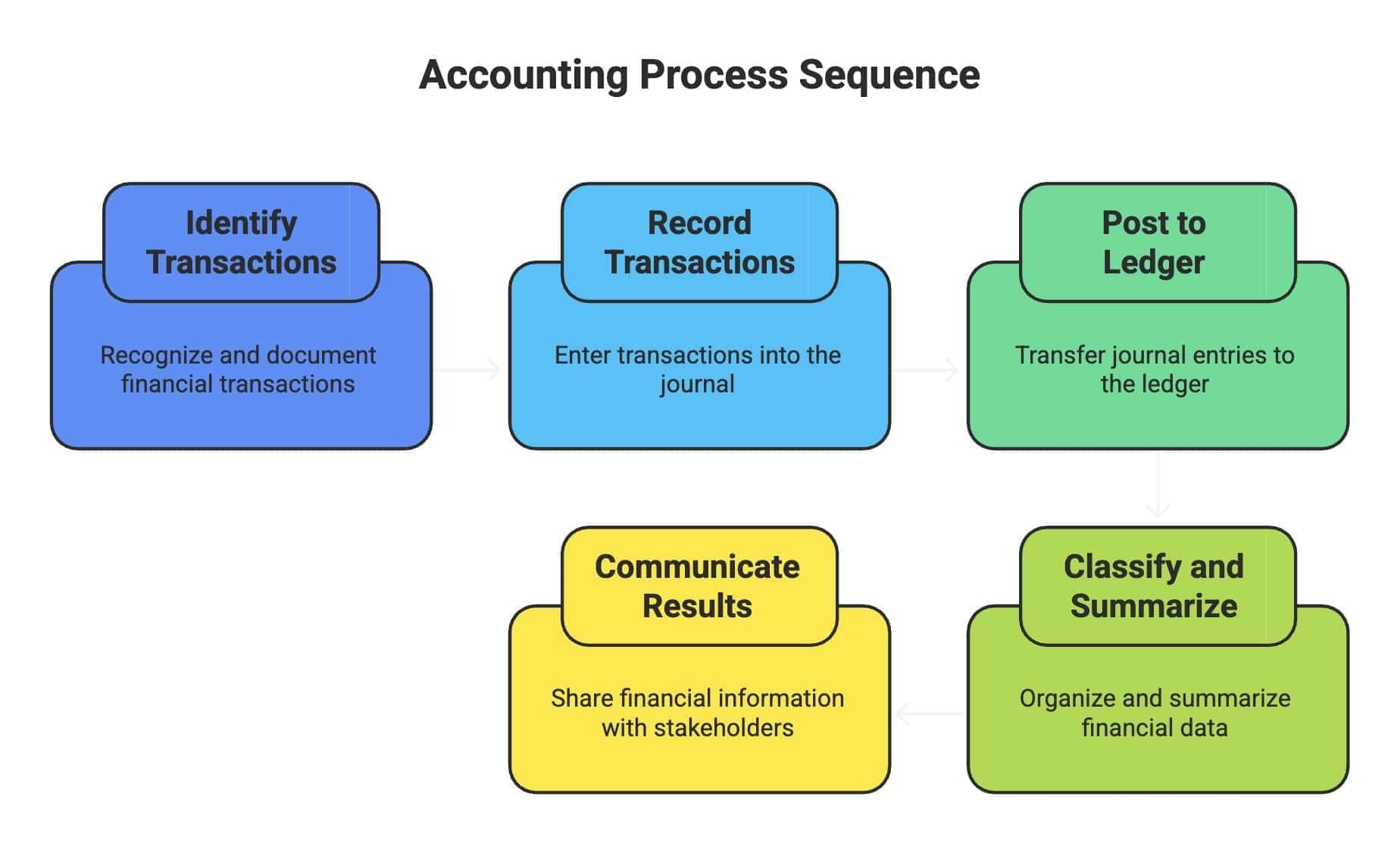
Business Transactions and Source Documents
- Business Transactions: Economic exchanges with a dual effect (e.g., buying a computer for cash affects cash and computer accounts).
- Source Documents: Evidence like cash memos, invoices, cheques, or salary slips; arranged chronologically and numbered.
- Vouchers: Documents proving transactions, prepared for petty expenses if no evidence exists, approved by authority.
- Recordings in books of account are based on vouchers/source documents.
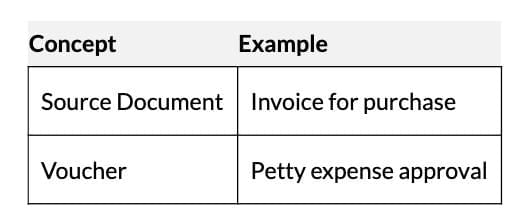
Accounting Vouchers
Types:- Cash Vouchers: For cash transactions.
- Debit Vouchers: Record amounts to be debited.
- Credit Vouchers: Record amounts to be credited.
- Journal Vouchers: For adjustments/non-cash transactions.
- Compound Vouchers: Multiple debits/credits (e.g., debit voucher: multiple debits, one credit).
- Good-quality paper, firm’s name, transaction date, voucher number.
- Account names, amounts, transaction description, preparer/authorised signatures.
- No fixed format; varies by business needs, often uses different colors/fonts.
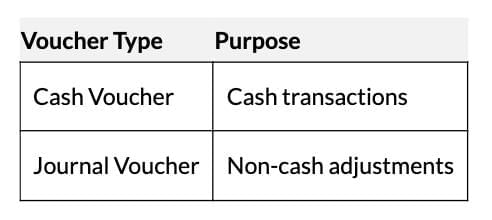
Question for Short Notes: Recording of Transactions - ITry yourself: What is a cash voucher used for?View Solution
Accounting Equation
- Represents: Assets (A) = Liabilities (L) + Capital (C).
- Rearranged: A – L = C or A – C = L.
- Also called Balance Sheet Equation, as assets equal liabilities plus capital.
- Example: Rohit starts business with ₹5,00,000 cash; assets (₹5,00,000) = capital (₹5,00,000).
- Profits increase capital; losses decrease it.
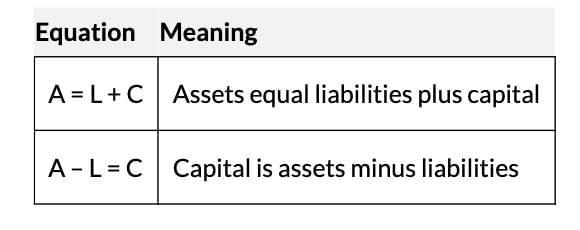
Debit and Credit Rules
- Double-Entry System: Every transaction affects two accounts; total debits equal total credits.
- T-Account: Left side (debit or Dr) records increases; right side (credit or Cr) records decreases.
- Assets/Expenses: Increase (Debit), Decrease (Credit).
- Liabilities/Capital/Revenues: Increase (Credit), Decrease (Debit).
Example: Cash purchase of goods debits Purchases (expense), credits Cash (asset).

Journal
- Journal: Primary book for recording transactions chronologically.
- Format: Includes date, accounts (debit/credit), amounts, narration, ledger folio.
- Simple Entry: Two accounts (e.g., credit purchase: debit Purchases, credit Creditor).
- Compound Entry: Multiple accounts (e.g., furniture purchase: debit Furniture, credit Cash/Creditor).
- Subdivided into Journal Proper, Cash Book, Purchases/Sales Books, etc.
Ledger
- Ledger: Main book where transactions are posted from journal to individual accounts.
- Utility: Shows net result of transactions for an account (e.g., customer/supplier balances).
- Format: T-account with Dr./Cr. sides, date, particulars, journal folio, amount.
- Posting: Transferring journal entries to ledger accounts, done periodically.
- Classification:
- Permanent Accounts: Assets, liabilities, capital (carried forward).
- Temporary Accounts: Revenues, expenses (closed at period end).
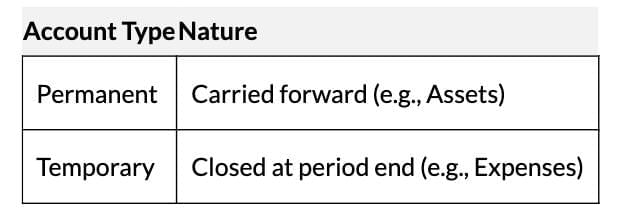
Accounting Entries under GST
- GST (CGST/SGST @ 5%): Recorded for transactions like purchases, sales, expenses.
- Example: Purchase ₹1,00,000 on credit; debit Purchases ₹1,00,000, Input CGST/SGST ₹5,000 each, credit Creditor ₹1,10,000.
- Net GST payable calculated as Output GST minus Input GST (e.g., ₹6,750 - ₹6,000 = ₹750 each for CGST/SGST).
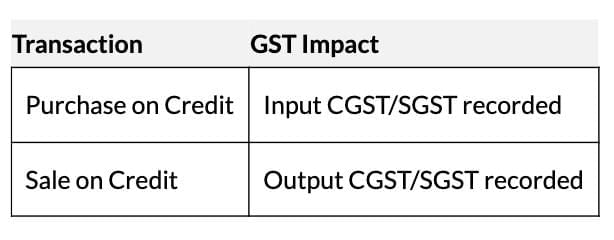
The document Short Notes: Recording of Transactions - I | Accountancy Class 11 - Commerce is a part of the Commerce Course Accountancy Class 11.
All you need of Commerce at this link: Commerce
|
61 videos|227 docs|39 tests
|
FAQs on Short Notes: Recording of Transactions - I - Accountancy Class 11 - Commerce
| 1. What are source documents and why are they important in accounting? |  |
Ans. Source documents are original records that provide evidence of a business transaction. They include invoices, receipts, purchase orders, and bank statements. These documents are crucial because they serve as the foundation for recording transactions in the accounting system, ensuring accuracy and accountability. They help verify the legitimacy of transactions and are essential for audit purposes.
| 2. Can you explain the accounting equation and its significance? |  |
Ans. The accounting equation is expressed as Assets = Liabilities + Equity. This fundamental equation represents the relationship between a company's resources (assets), its obligations (liabilities), and the owners' interest (equity) in those resources. It is significant because it ensures that the balance sheet remains balanced, reflecting the financial position of the business accurately at any given time.
| 3. How do debit and credit rules apply in accounting? |  |
Ans. In accounting, the rules of debit and credit dictate how transactions are recorded. A debit entry increases asset or expense accounts and decreases liability, equity, or revenue accounts. Conversely, a credit entry decreases asset or expense accounts and increases liability, equity, or revenue accounts. These rules help maintain the balance of the accounting equation and ensure accurate financial reporting.
| 4. What is a journal in accounting, and what role does it play? |  |
Ans. A journal is a detailed record of all financial transactions in chronological order. Each entry in the journal includes the date, accounts involved, amounts, and a brief description. The journal plays a vital role in the accounting process by serving as the initial point of entry for transactions before they are posted to the ledger. It helps in organizing and tracking financial activities systematically.
| 5. How are accounting entries recorded under GST? |  |
Ans. Accounting entries under the Goods and Services Tax (GST) are recorded by following specific guidelines. Businesses need to account for GST collected on sales (output tax) and GST paid on purchases (input tax). The entries typically involve debiting the relevant expense or asset account and crediting the GST payable account when sales occur, and vice versa when purchases are made. This ensures compliance with GST regulations and accurate financial reporting.
Related Searches















